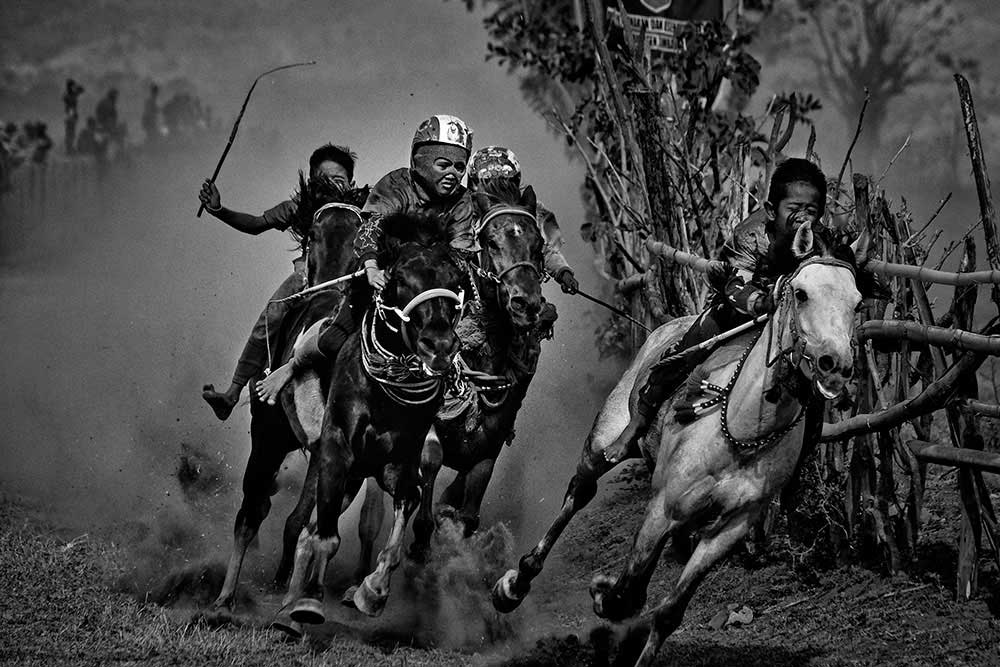Photographers often speak about the birth of their career—the first time they picked up a camera; their first assignment—but restarting or reimagining a career decades later can be just as significant.
Belgian photographer Alain Schroeder has been working in photography for more than three decades, first as a sports photographer for 15 years (shooting 500 magazine covers during his tenure), before turning to book assignments spanning travel, fine-art and architecture. He co-founded photo agency Reporters in 1989 and ushered the business through the rise of digital photography and video assignments.
Five years ago, Schroeder uprooted his life and began the next chapter of his career, selling his shares in Reporters to traverse the world with his camera. His travels have taken him through Central and Southeast Asia: Kyrgyzstan, Tajikistan, Uzbekistan, Kazakhstan, Afghanistan, Sri Lanka, Laos, Cambodia, Thailand, Myanmar, Indonesia, and India, where he stayed for two six-month periods in 2013 and 2014. [Official Website] [Print Version] [Digital Version]
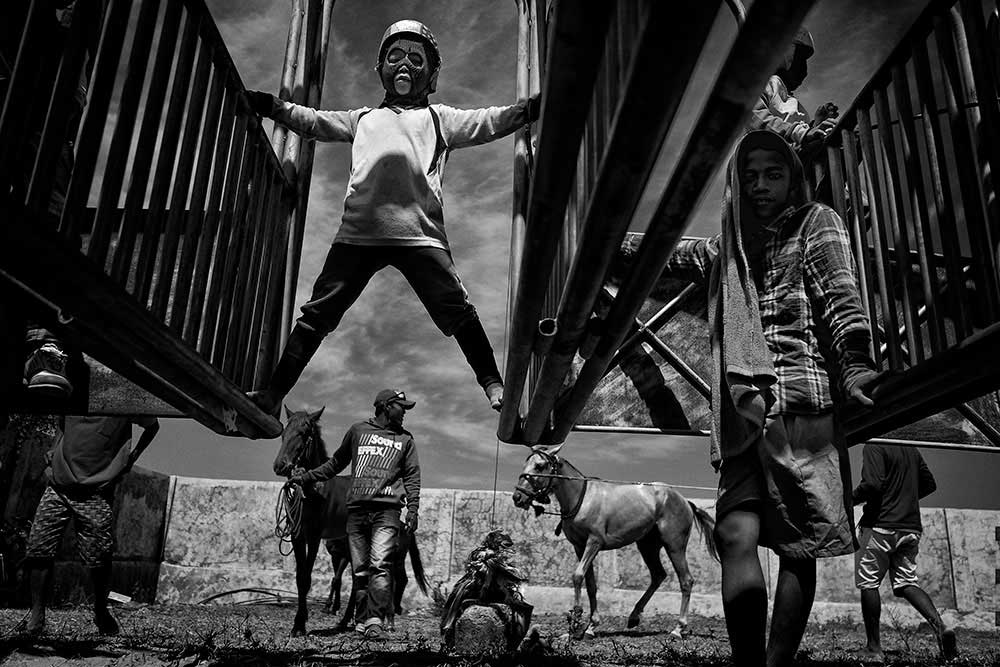
How long have you been shooting professionally? How did you get started? Please discuss your background with Reporters as well, how running an agency has shaped your role in photojournalism.
In 1979, after completing my studies in fine art and photography in Belgium, I worked as a sports photographer for 15 years. In 1989, I established Reporters Photo Agency www.reporters.be with two other photographers and within a few years it grew from 3 to more than 20 people. I have done all types of photography over the last 30 years, plus I had to learn all the administrative and financial aspects of running a larger company. Around 2000, business was getting harder due to the Internet and the rise of digital cameras. Both technologies are great, but competition became stronger and more diverse, not only from other agencies but almost anybody could sell or try to sell pictures. Prices went down. This revolution affected magazines and newspapers and the money suddenly disappeared. Magazines no longer offered assignments or guarantees and we were forced to explore other sources of revenue like corporate communications and video.
What is your primary goal with your work?
I like to tell stories in a personal visual way. In Belgium, we have a background of surrealist artists (Magritte, Delvaux) plus the strong influence of the French surrealists. They definitely shaped the way I see things.
Can you describe your work?
Documentary photographer for 40 years and 25 years as the director of Reporters, one of the leading Belgian photo agencies, have definitively fashioned my approach to photography. I’m most interested in the in-depth reporting of stories relating to people and their environment. Various cultures, modes of living, rituals and customs fascinate me.
My work is a mixture of photojournalism, contemporary documentary and art photography influenced by my Belgian heritage, imbued with a dose of surrealism.
What are some standout projects that you’ve worked on during your tenure?
During my first career as a sport photographer, I shot 3 World Cup soccer tournaments and the Olympic Games but my specialty was tennis. I shot Roland Garros, Wimbledon and the US Open many times over 15 years. After that came a period of book assignments that took me to many countries for a variety of subjects. While I enjoyed shooting all of this, I was most often on assignment for others. Today,I’m telling stories that interest me, in a series of about 10 images, with total control of every project: Kushti (India), Brick Prison(Bangladesh), Miracle Mud (Romania), Who Will Save the Rohingya (Myanmar), Taekwondo Style (North Korea)…
What did you find most surprising in all of your assignments out in the field?
Probably shooting the series Living for Death in Sulawesi, Indonesia, where people clean the corpses of the deceased members of their family. They remove the coffins from their burial sites and open them. The mummies are cleaned, dried in the sun and given a change of clothes. Expressions of sadness are mixed with the overall happy atmosphere surrounding these moments of bonding with loved ones and honoring ancestors. Very unusual but very interesting.
What habits have contributed to your success as a photojournalist?
To explain that I have to share an interesting experience I had when I was a sports photographer. I was invited for many years to participate in the making of the book «Roland Garros seen by the 20 best tennis photographers in the world» managed by Yann Arthus-Bertrand, the famous French filmmaker and photographer. In the confined area of Roland Garros, the idea was that every day 20 photographers had to bring back a few good pictures that were immediately displayed on a wall. Yann would select the best ones for the book. Some days you did not even make the wall selection! But every day your colleagues made good pictures sometimes when you had not seen anything special. They might have found a new location, a different way of seeing things; from a higher perspective or at night after the matches. What does it mean? The pictures are there, they exist. You have to have ask yourself, how can I make a good picture and where is the best angle, then find the spot and wait. I know that the pictures « exist » in a sense, and if I don’t get them myself another photographer in the same place will find the way to reveal them. There is always a good picture to be taken, you just have to work hard to get it. That idea never leaves me.
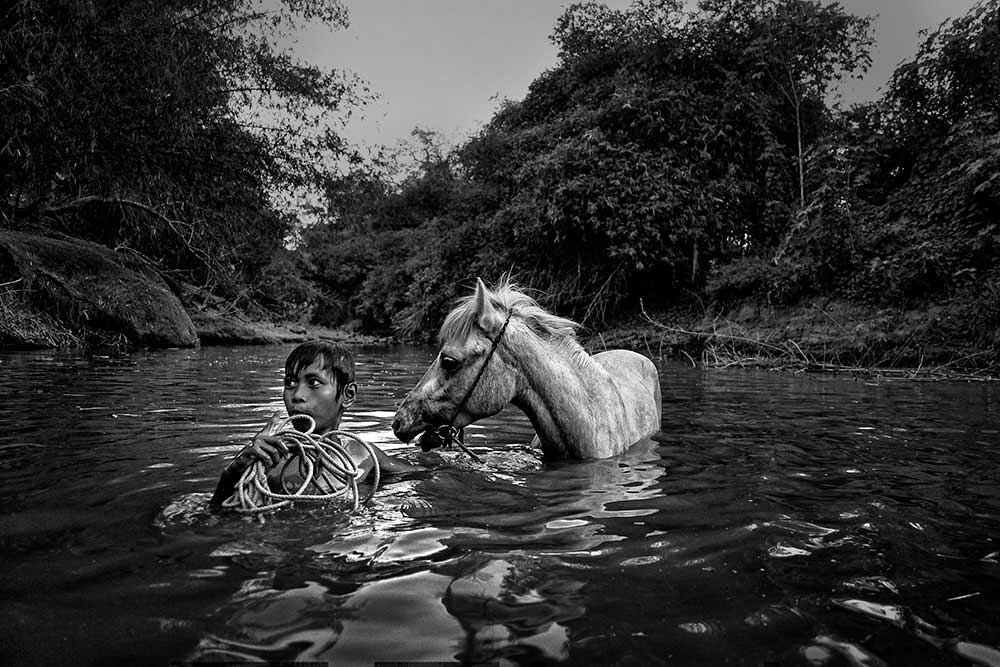
What do you think about photojournalism as a career today?
Unfortunately I know a lot of very good photojournalists who find it extremely hard to survive and to do their work. Assigments are drying up and the money you get for your stories is shrinking. However, Internet has brought new opportunities for photojournalists including more contests with prize money awards, crowdfunding platforms for projects, grant funding opportunities, exhibitions, online sales of pictures, etc. In 2012, I decided to sell my shares. I am once again a freelance photojournalist traveling the world searching for stories.
Take us back to the time you discovered your passion for photography.
I was 18 and I spent a lot of time at the library reading fine arts books. When I had seen all the books they had about painting, the librarian gave me some photography books. One was the famous French magazine Photo and the first story I liked and remember was made by a Japanese photographer, Kishin Shinoyama. It was a very interesting magazine as it mixed all kinds of photography – fashion, documentary, travel, war, personal work – in one issue. After that I discovered another famous magazine called Zoom and all the classic photographers like Cartier-Bresson,… I was hooked and switched immediately from fine arts to photography classes.
Can you share your photography secrets?
I have no secrets. I learned photography with black & white and color slides using analog cameras in the 70s. I know the techniques very well but since then camera manufacturers have made so many technical improvements that I usually put my camera on P (program) or S (so I can choose the speed). I studied fine art and over the years I developed a good sense for framing a picture. I feel instinctively where I should place myself to get the best pictures. Photography is not made by the camera but rather a little bit by your eyes and mostly by your brain.
What advice were you missing when starting working in this field?
I started to study photography in 1971. I had very good technical B&W teachers (which has helped me a lot throughout my career) but unfortunately nobody in the photojournalism field. I had to learn that by myself when I started as a professional sports photographer. To give you an example, over the summer holidays in 1974, I hitchhiked from Belgium to Afghanistan crossing Europe, Turkey, Iran and Afghanistan for my final school project. Along the way I documented people in all those countries but I « forgot » to make a story about the people in their twenties called hippies, starting to travel the world. At the time I did not understand the journalistic value of that story because I had no photojournalism background, only an aesthetic approach of photography.
How do you understand photography as a whole and how can you see it in the coming years?
When I started in the 70s, we waited feverishly, impatiently each month for the next issue of Photo or Zoom to see new photographs, photographers, styles. Everything was in slow motion. We had the time to understand the style of every photographer. What I see now is too many average or poor pictures and a public that doesn’t care for quality. People are used to seeing their own pictures on their telephones and with no references, no visual education, they think the pictures are good enough. At the same time though, many more people are visually educated and are waiting for and appreciate good photojournalism. After a decline over the last 10-15 years the next decade could see a revival of quality stories.
There is room for high caliber work but the problem for paper and online publishers is to find the money to pay the right price for a skilled photographer.
There is room for quality work but the problem is how to pay the right price for a skilled photographer.
What is the role of light in color and black & white photography? Which one is easier?
You have to adapt your shooting to the situation and the light. When it is the right situation for color the shooting will be easy; same thing for black & white. But trying to shoot in B&W when it is a color situation or vice versa is difficult and not rewarding and you will realize it very quickly.
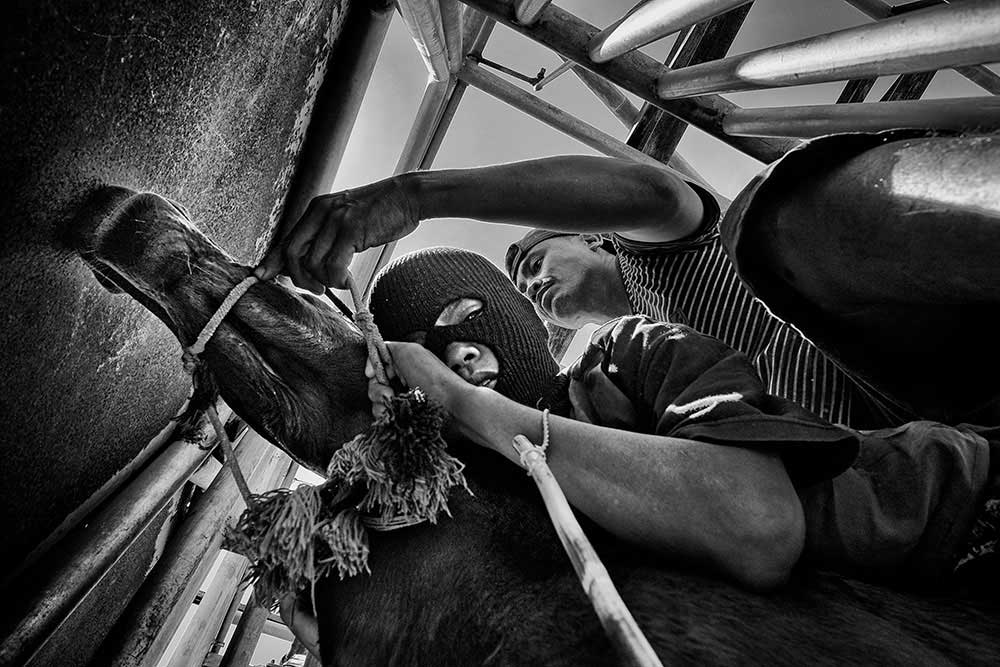
What is, in your opinion, the most important element to make great shot. Light? Composition? Technical perfection?
As a photojournalist there are a few habits that contribute to taking good photographs. In any given situation you have to ask yourself, how can I make the best picture? Where should I be shooting from to tell the story? Evaluating the light and good framing are also part of the process. I’m always surveying my environment, making mental notes. You have to work hard to bring all these elements together sometimes in an instant. Technical perfection doesn’t mean anything in 2018 as the quality of the equipment is so good. When I compare scans of my 4×5 inch slides taken with a technical camera to an actual small camera, the new camera wins.
Seeing the light is a hard skill to master. What impresses you the most when evaluating if a situation is worth the effort or not?
The light is no longer the first thing I take into account. As a photojournalist the subject is definitely more important. But once I have a story, I try to do the most with the available light. Sometimes a story is driven by the subject sometimes more by the light and the atmosphere. For instance, my Kushti series was closely related to the light. Of course the subject was there but a few pictures became even better because of the interesting light. The light enhanced the message I wanted to deliver.
In post-production, what is a typical image editing workflow for you?
I learned photography in the 70s, the time of analog photography and I spent days and nights in the darkroom. When Photoshop arrived on the scene in the 90s, I was so happy to be able to do the same thing that I used to do in the darkroom without having my hands covered with foul smelling products! I could do everything (and more) sitting in a lounge chair with a good coffee ;-).
I use Media Pro to catalog my images and sometimes, but rarely, Light Room and Capture One. I shoot in jpeg not in raw.
My typical editing workflow is to choose 15 to 20 shots that work together and try to place them in a cohesive order. Once it makes sense and I feel that I’ve got a good story, I start the post-processing work. After, I choose an additional 20 images to compliment the selection. It’s possible to tell different stories based on the editing.
Kid Jockeys; when did you travel to photograph your winning series?
I went to Indonesia in September 2017.
Kid Jockeys, Is there a story about that?
Yes. Once a game between neighbors to celebrate a good harvest, horse racing was transformed into a spectator sport by the Dutch in the 20th century to entertain officials and nobility. The unique features of Sumbawa racing are the notoriously small horses and fearless child jockeys (5-10 years old) who mount bareback, barefoot and with little protective gear, racing at speeds of up to 80 kms per hour. Their only protection is the « Sandro », a spiritual healer who protects young jockeys by performing elaborate rituals and guiding them in training. Maen Jaran (the Indonesian name of the game) takes place during important festivals and holidays throughout the year at racetracks across the island and remains a favorite pastime for Sumbawans. Rules have evolved, horses are now classified by age and height, yet kid jockeys continue to risk their lives for 3,50 to 7 euros per mount often racing 5 to 6 times in a day, pushed by parents and relatives given the potential earnings that far outweigh the poor returns on crops often plagued by drought.
Kid Jockeys, How did you learn of those races? Did you research the traditions of the race before you left?
I often learn about new stories through books or pictures I see in magazines or even Internet. In this case, I saw a short story with 2 pictures in an in-flight magazine on a domestic flight in Indonesia. I usually collect and store information in folders on my computer and then I do some research. If I feel some personal interest, I just go.
Kid Jockeys, Describe your experience on location – what shots were you primarily looking to get?
I rented a scooter and spent 10 days at the racetrack which was 20 km away from the town of Sumbawa Besar. There were not many people during the preliminary races and I got to know everyone at the dusty, unkempt track. I hung out with the organizers in the tower at the finish line, drank fresh juices at the food truck (my savior in the stifling heat) and basically had carte blanche to go anywhere on the track. The races started everyday around 10 or 11, never precisely. There were very often changes. It lasted 7 days or so except on Friday when, for religious reasons, there were no races. With 4 to 8 races per day, there was plenty of time in-between to look for behind the scenes pictures and to learn about healing rituals and the bathing of the horses after the races. This is probably the reason for the success of the story. It depicts not only the race but also the associated customs and rituals.
Kid Jockeys, How did you interact with local people?
Only a few people spoke a little bit of English so it was not easy to get information. By chance, the owner of the (only) food truck had previously worked in the tourism industry in Bali and he helped me a lot to find the right answers and to interact with the Sandros (local healers).
Kid Jockeys, Visually, what did you want to convey through this series?
As I spent more time on the racetrack, I began to fine-tune my approach to the series. In the beginning, I thought it was all about sports, but I discovered all the side rituals which I had no idea about before coming, I edited my pictures to reflect the bigger story. I was also impressed by the contrast between modern Indonesian lifestyle, this local custom, and the way they choose to live their passion with their horses. The tradition of racing here has not changed over a century.
The only aspect I did not like was the fact that they do not wear helmets. Barefoot, bareback is fine but you know (or should know, even with the protection of the healer) that almost inevitably you will fall one day. And that day a helmet could save your life or at least reduce the injuries. Well, the adults should know…
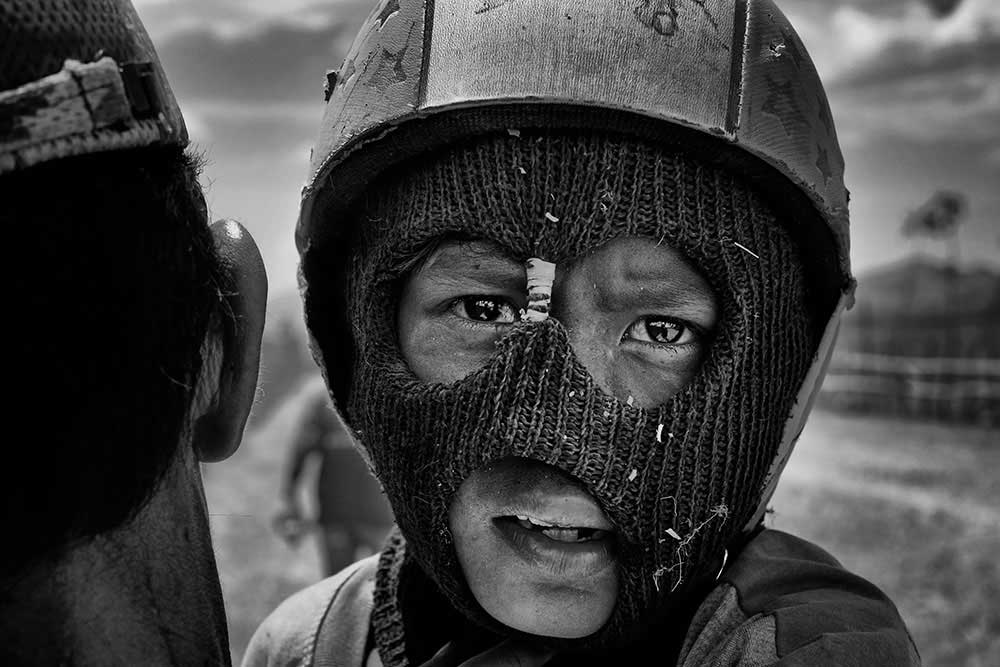
What kind of equipment did you use (camera, lens, lighting, accessories)?
I use only one camera, a Fuji XPro2. I don’t have 2 or 3 cameras hanging around my neck. I have a spare Fuji XPro1 wrapped and in a box in my suitcase never used.
I use 4 Fuji lenses, a 18mm 2, 14mm 2.8, 35mm 1.4 and a 55-200mm zoom 3.5 – 4.8.
I have a Nikon flash SB28 and a small remote control (Pawn Wireless Flash Trigger, TF-362RX) but I use it rarely as the quality of the XPro2 allows me to take pictures even when it is very dark.
I use the flash only when I have an assistant to hold it. The last time I used it was in 2015 for the story on Belgian Crystal in India for National Geographic.
Accessories:
– SD cards: 2 32GB, 2 64GB and a few old 16GB just in case
– I have a mini Ikan LED light
– 8 hard drives WD 4GB; half of them have the original pictures and the other half are miror copies
– 1 mini Cullmann tripod
– 1 CLM104 Stealth Carbon Fiber Monopod – 4 sections
– 1 Mac computer
– 2 battery chargers and 12 batteries for XPro2
– 1 27mm 2.8 pancake lens. It is a spare (not yet used), always in a box in case my 18mm has a problem.
How important is an awesome website for your business and how has social media played a role in your photography?
A website makes things easier to communicate. It allows me to centralize my work and keep track of contacts and requests. It’s also a great way to share new stories with potential clients in a private manner. I am active on Instagram. Posting is quick and easy and it offers excellent exposure. I follow a few fellow photojournalists but I don’t want to spend too much time on that. Real life is far more interesting than Instagram but I’m old school.
What future plans do you have? What projects would you like to accomplish?
The idea is to travel the world as long as I can. Now I am Indonesia for a new story and then the Maldives in January 2019. After that…?
